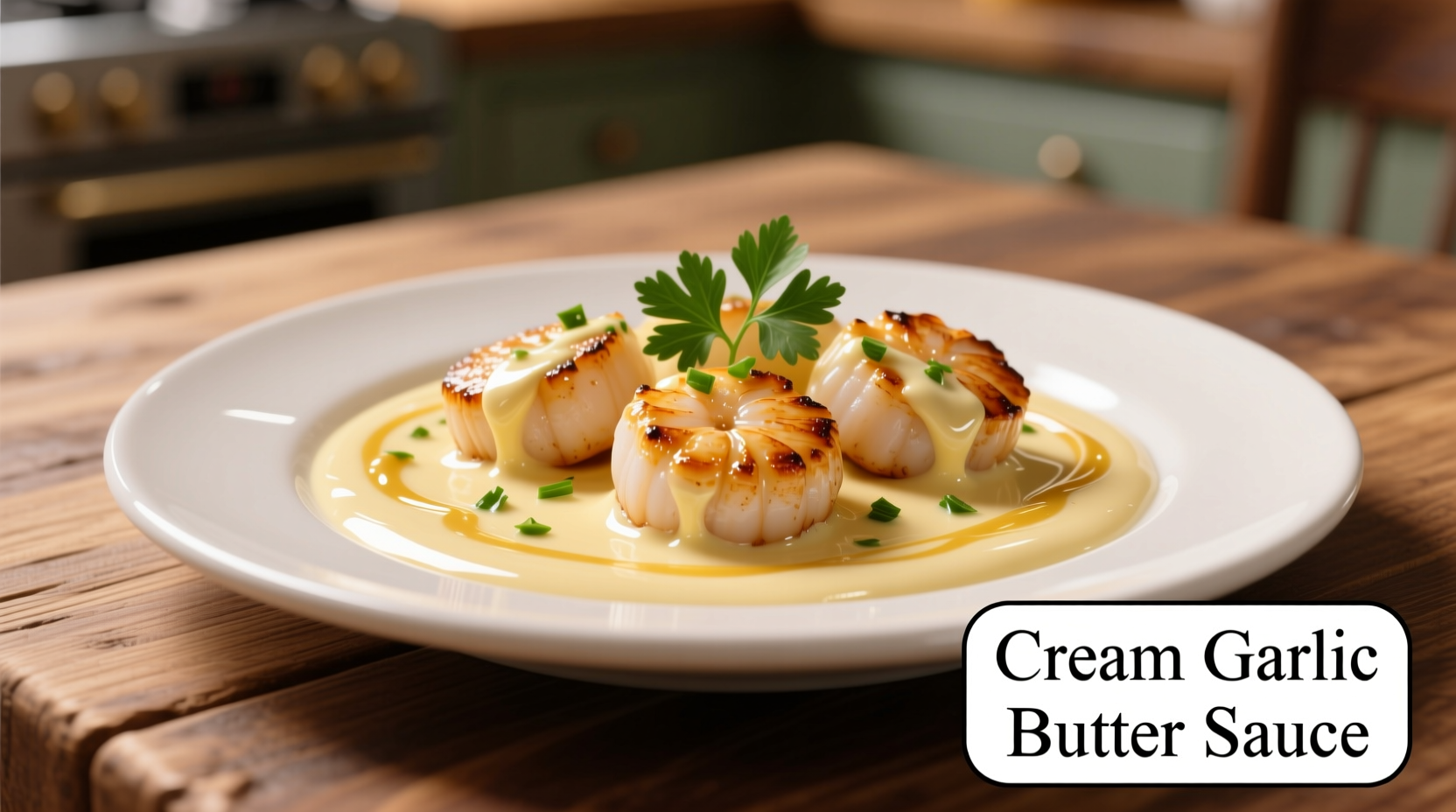Discover how to create restaurant-quality cream garlic butter sauce in your home kitchen with this comprehensive guide. You'll learn the precise temperature control needed for perfect emulsification, professional techniques to prevent curdling, and creative variations that transform this classic sauce into dozens of gourmet applications. Whether you're preparing fettuccine Alfredo, enhancing grilled shrimp, or creating a decadent vegetable topping, these methods guarantee silky-smooth results every time.
Essential Ingredients and Their Roles
Understanding each component's function ensures consistent results. Professional chefs emphasize these non-negotiable elements:
- Unsalted butter (½ cup): Provides rich mouthfeel and carries garlic flavor. Unsalted allows precise sodium control
- Heavy cream (1½ cups): Minimum 36% fat content creates stable emulsion. Never substitute half-and-half
- Fresh garlic (4 medium cloves): Minced finely for even distribution. Powdered garlic creates bitter notes
- White wine (2 tbsp): Deglazes pan and balances richness. Substitute with chicken stock for alcohol-free version
- Freshly grated Parmesan (optional): Adds umami depth without graininess of pre-grated cheese
| Ratio Variation | Texture Result | Best Applications | Professional Recommendation |
|---|---|---|---|
| 2:1 cream-to-butter | Light coating sauce | Seafood, steamed vegetables | "Ideal for delicate proteins" - Bon Appétit Test Kitchen |
| 3:1 cream-to-butter | Silky pourable consistency | Pasta, chicken cutlets | "Standard restaurant ratio" - America's Test Kitchen |
| 1.5:1 cream-to-butter | Rich clingy texture | Hearty dishes, casseroles | "Use with robust ingredients" - Chef Thomas Keller |
Step-by-Step Preparation Method
Follow this chef-developed process for flawless results:
- Sweat garlic gently: Melt butter over medium-low heat, add minced garlic, and cook 2-3 minutes until fragrant but not browned. Burnt garlic creates bitterness.
- Deglaze properly: Pour in white wine, scraping browned bits from pan bottom. Simmer until liquid reduces by half (approx. 90 seconds).
- Controlled cream incorporation: Warm cream slightly before adding to butter mixture. Pour gradually while whisking constantly to maintain emulsion.
- Temperature management: Maintain gentle simmer (180-190°F / 82-88°C). Never boil, which causes separation.
- Final seasoning: Off heat, stir in Parmesan (if using), then season with salt, white pepper, and lemon juice to balance richness.

Avoiding Common Mistakes
Professional kitchens identify these critical pitfalls:
- High heat cooking: Causes butterfat separation. Maintain temperatures below 195°F (90°C) as documented in USDA food safety guidelines
- Adding cold cream: Creates temperature shock. Always warm dairy to room temperature first
- Over-reducing: Exceeding 25% reduction makes sauce gummy. Measure liquid volume before and after reduction
- Using pre-minced garlic: Contains preservatives that prevent proper flavor development
Perfect Pairing Guide
This sauce shines with specific ingredients when matched correctly:
| Protein | Preparation Method | Sauce Modification | Recommended Pasta Pairing |
|---|---|---|---|
| Shrimp | Sear 90 seconds per side | Add lemon zest and pinch of cayenne | Linguine or spaghetti |
| Chicken breast | Pan-sear to 165°F internal temp | Add 1 tsp Dijon mustard | Fettuccine or pappardelle |
| Mushrooms | Sear until caramelized | Add 1 tbsp fresh thyme | Farfalle or orecchiette |
Storage and Reheating Protocol
Follow these food safety guidelines for optimal results:
- Refrigeration: Store in airtight container for up to 3 days. Separate sauce from proteins for best quality
- Freezing: Not recommended - dairy-based sauces often separate upon thawing
- Reheating: Warm gently over low heat while whisking constantly. Add 1-2 tsp cream if needed to restore consistency
- Discard after 4 hours at room temperature per FDA food safety standards
Creative Variations for Every Cuisine
Transform your basic sauce with these chef-approved adaptations:
- Truffle version: Add 1 tsp truffle oil and 2 tbsp grated pecorino romano after sauce is complete
- Spicy arrabbiata style: Stir in 1 tbsp Calabrian chili paste and fresh basil
- Herb-infused: Steep 3 sprigs fresh tarragon in warm cream for 15 minutes before making sauce
- Dairy-free alternative: Use cashew cream (1 cup soaked cashews + 1 cup water) with vegan butter
Historical Evolution of Cream Garlic Butter Sauce
This beloved sauce has evolved significantly since its French origins:
- 1890s: First documented as "Sauce à la Crème" in Escoffier's Le Guide Culinaire, using beurre manié for thickening
- 1950s: American adaptation added garlic, creating "Chicken à la King" variations
- 1980s: Italian-American restaurants popularized fettuccine Alfredo with cream-garlic variations
- 2000s: Modern chefs began emphasizing emulsion science for stable, separation-free results
- Present: Health-conscious versions use alternative thickeners while maintaining traditional flavor profiles
When Not to Use Cream Garlic Butter Sauce
Professional chefs recognize specific limitations for this sauce:
- With acidic ingredients: Tomatoes or citrus added directly cause immediate curdling. Add acid components separately as garnish
- For extended simmering: Breaks down after 20+ minutes of cooking. Add near end of preparation
- With delicate fish: Overpowers mild white fish. Better suited for salmon or swordfish
- In high-heat applications: Cannot withstand broiling or grilling temperatures without separating
FAQs About Cream Garlic Butter Sauce
Find quick answers to common preparation questions:











 浙公网安备
33010002000092号
浙公网安备
33010002000092号 浙B2-20120091-4
浙B2-20120091-4